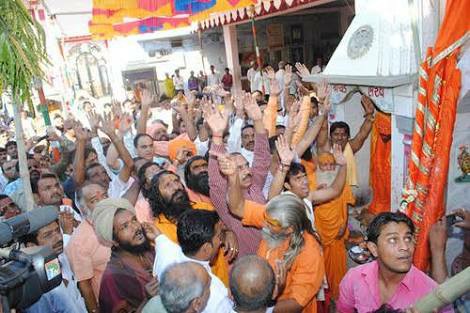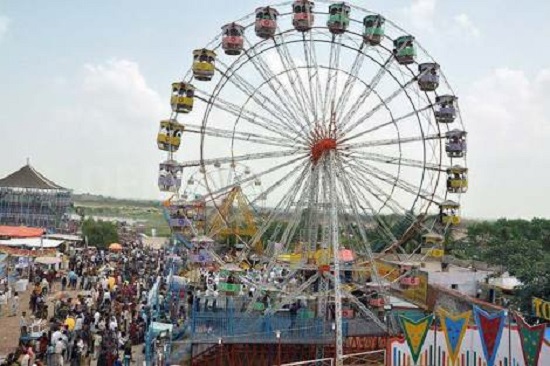Bhavnath Mela in Junagadh filled with devotees
During Shivratri festival in Gujarat and India, Bhanath Mela has its own religious significance and it is very famous among devotees. The mela lasts for five days. Every year mela is held at the Bhavnath Mahadev temple in the foothills of Girnar around 8 km from Junagadh and which culminates on the Mahshivratri day with great show of devotional and festivity by Naga sages. Mela started today with the performance of the traditional ritual of religious flag hoisting amid slogan shouting, vedic chants. After the main temple dwajarohan was also done in Juna, Aavahan and Agni Akhadas, Annaksheetras and other places. The fair commences from the Hindu calendar date of Magh Vad 11 which coincided with March 3 this year. Attended by around a million devotees and sages the fair culminates on Mahashivratri (March 7 this year) when it is believed that in the moonless night Lord Shiva performed his tandava, the cosmic dance of destruction, a mahapuja is performed. This ritual begins at midnight on Mahashivaratri every year, when naga bavas, or naked sages, seated on elephants and decked in ornaments, arrive holding flags and blowing conch shells, tungis, and turis, the sounds of which reverberate through the entire space.
Devotees believe that Lord Shiva himself visits the shrine on this occasion. Girnar is said to be the abode of the nine immortal nathas, and eighty-four siddhas, all of whom also visit the temple in their invisible spirit forms during Mahashivaratri. Offerings are made to the deities, and the festive energy is expressed through performances of dance, music and traditional bhavai theatre. Before going to the fair, many pilgrims visit the holy hills of Girnar.

Visitors are served free meals by the organizers which is called ‘Harihar’ locally. Special stalls sell idols of god and goddesses, rosaries brought from Ayodhya and Mathura, and delectable sweets. The evening leading up to the midnight ritual of Mahashivaratri, at the wrestling grounds, or akhada, next to the temple, the naga bavas gather for a ritual involving a blend of dance and martial arts. According to myths, the Shiva linga (body) in the ancient temple is said to have emerged of its own divine intention. It is said that once when Lord Shiva and Goddess Parvati were traveling over the Girnar Hills their divine garment fell over the present Mrigi Kund, making this place an auspicious site for Shiva worshipers. Even today, the naga bavas bathe in the holy Mrigi Kund before joining the Mahashivaratri procession. The fair itself is so ancient that its precise origins are unknown.

Most devotees are from different parts of the country, particularly from Gujarat and Marwad in neighboring Rajasthan, have been coming to the fair for many years. While many come clad in lively colors, the Ahirs and Mers of the Junagadh district are the most striking among them.The district administration has also made elaborate security arrangements to prevent and check any untoward event in the wake of large gatherings during the fair. Total 75 CCTV cameras have been installed in the Mela area. Over fourty police spots have also been created.





